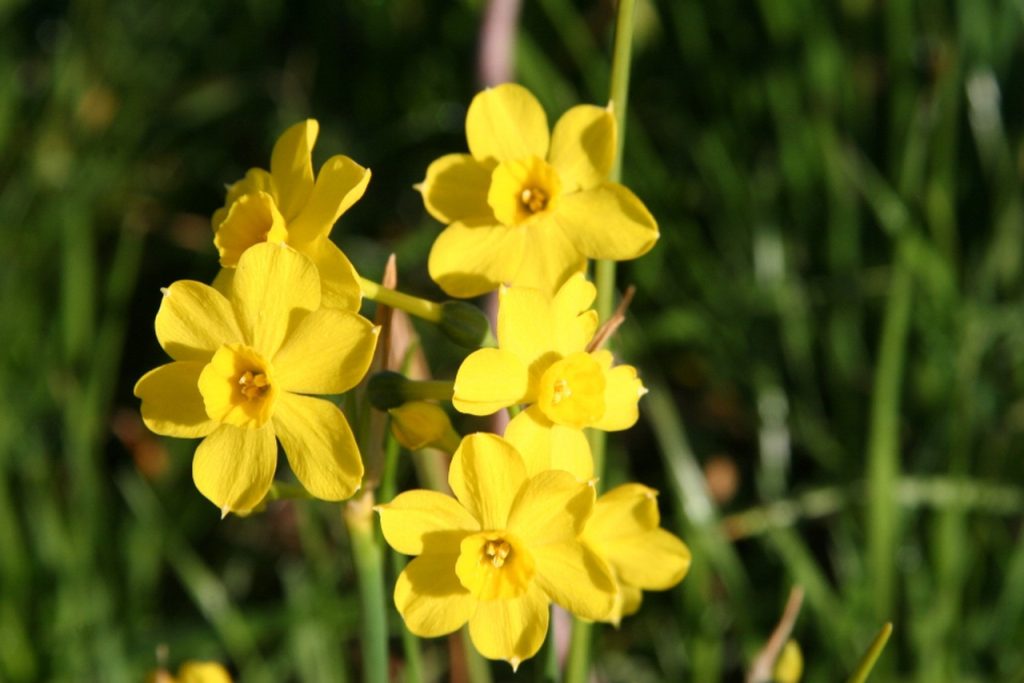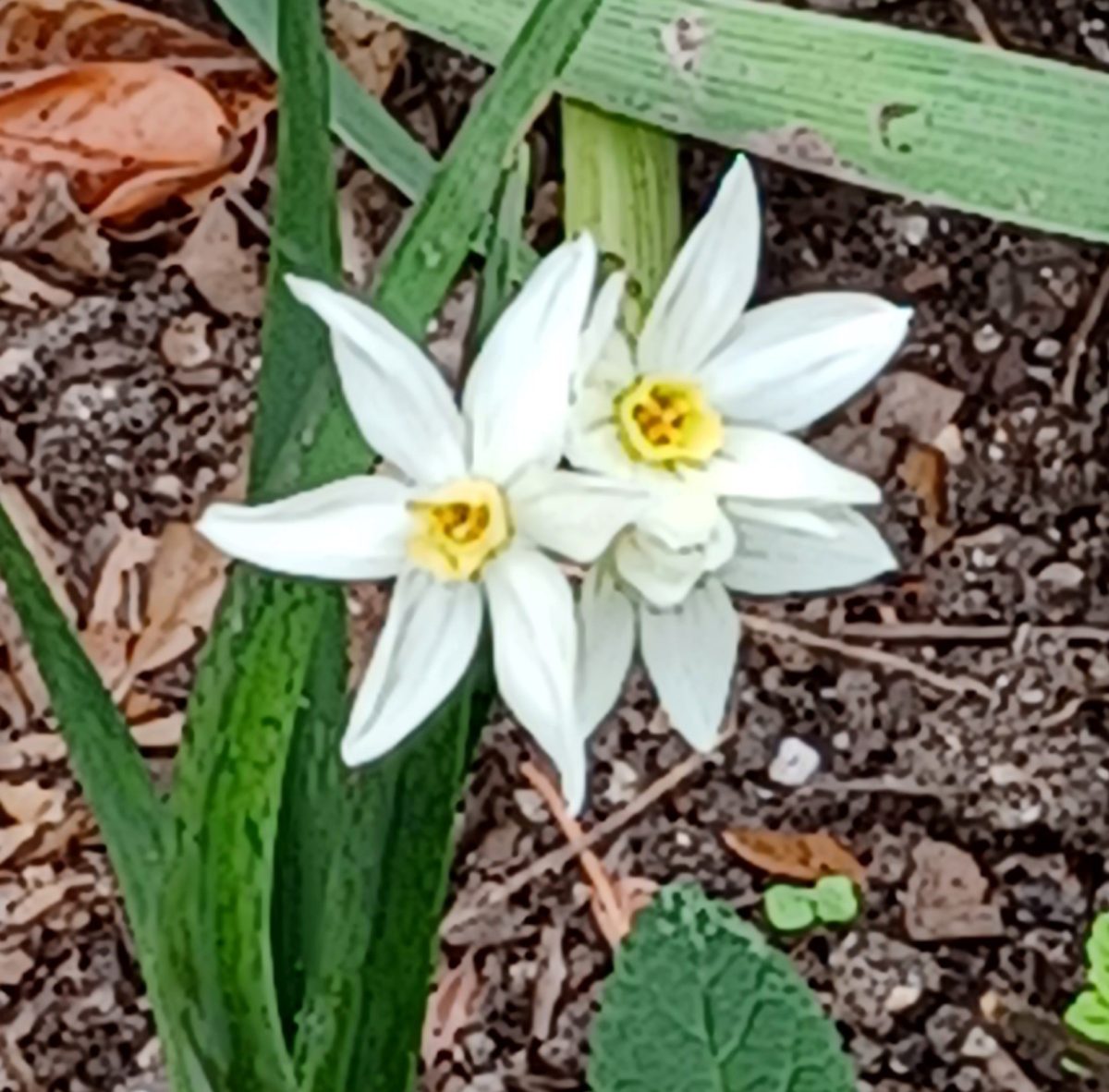By Mary Cennamo, Bexar County Master Gardener
January 2024

The flower Narcissus is in the Amaryllidaceae family. Its name is from the Greek word ” narkao,” or “to be numb” because when the flower is eaten, it causes great harm, usually with extreme stomach upset. Deer will not bother these bulbs or flowers, but other creatures will sometimes just dig them up and take a bite.
Narcissus are usually the first to bloom in the spring, bringing hope for everyone for a new year, assuming they survive the critters in your garden!
History of the Narcissus
Originally, this bulb was found throughout Europe, mainly in the forests and shores of the Mediterranean Sea and Northern Africa and is native to Albania, Corse, France, Greece, Italy, Kriti, Sardegna, Sicilia, and Yugoslavia. It has a long history and was found during the Roman empire, in Egyptian tombs and is also mentioned in Greek mythology. Many may remember the story of Narcissus, a vain young man who stared into his reflection in a pool of water for so long that eventually he turned into a daffodil.
Narcissus became popular in the Netherlands in the 1500s at a time when tulips were the most popular flower but became too costly, and daffodils became a more affordable alternative. The daffodil is also the country of Wales’s national flower and is believed to be a symbol of luck.
Planting Narcissus
Narcissus is a plant that is popular for its beauty and minimal care if you choose the right varieties and the right spot in your garden.
Bulbs should be planted during the fall in partial or full sun, about 4 to 6 inches down to protect from winter freezes. Many experts have said that you should plant spring bulbs two to three times as deep as the bulbs are tall. Others indicate that the bulbs should be dug up and stored in a warm spot during the winter in colder regions.

This past winter, I left my bulbs in the ground in my garden where they are planted up against my house for better winter protection. I have read that narcissus do not like the hot summer sun, so planting them in an area in your garden that doesn’t receive the severe summer afternoon sun would be advisable. Keep in mind that these flowers need only six hours of sunlight to survive and bloom.
The flowers can be successfully grown in a variety of soils and typically bloom between February and March. You should fertilize in the spring before and after they bloom, ideally with a 10x10x10 all-purpose fertilizer.
Water them about an inch per week during the growing season, but once they start dying back, stop watering. Don’t trim the leaves after they flower as the bulbs replenish their nutrients through the leaves for the next year’s blooming cycle.
Varieties of Narcissus Bulbs
The Daffodil Society has organized daffodils into 13 divisions based on petal characteristics and cup size. Each of the 27,000 varieties has its own unique characteristics including flower size and height as seen in such specimens as the cupped trumpet flowers to the small and elegant tazetta paperwhites. Not all varieties do well in San Antonio due to our hot summers. Choose those that are most resilient: you will enjoy them for many years as they multiply, spread and naturalize under a tree canopy or in an open area.
Here are four varieties recommended for Central Texas:
- Trevithian (N.jonquila),
- Campernelle (N. Odorus)
- Quail (N. Jonquil, a miniature sized flower with a long-lasting fragrance
- Grand Primo (N. tazetta has a white flower.)
Others suggest Grand Monarque (N. tazetta subsp. lacticolor with fragrance), Italicus (N. Tazetta), an ancient heirloom bulb with a star-shaped flower and a small yellow cup from the 17th century in Venice that likes dry summer; Carlton (a yellow, large-cupped variety, with a vanilla fragrance that naturalizes well), and Ice Follies.
I chose 3 of these daffodil varieties to plant in my garden last fall, and they began emerging from their sleep at the end of November. My selections were based on fragrance because I like to bring the cut flowers into my house. I chose the Italicus daffodil in particular because its origin is from Italy, and that is where my family is from.



(Photos from The Southern Bulb Company)
Daffodils are a beautiful, low-maintenance and hardy plant with few pests that add beauty and fragrance to your garden, and should be included in everyone’s garden to enjoy every spring. You can use them as cut flowers, bringing their fragrance into your home as well to enjoy.
Happy gardening!

